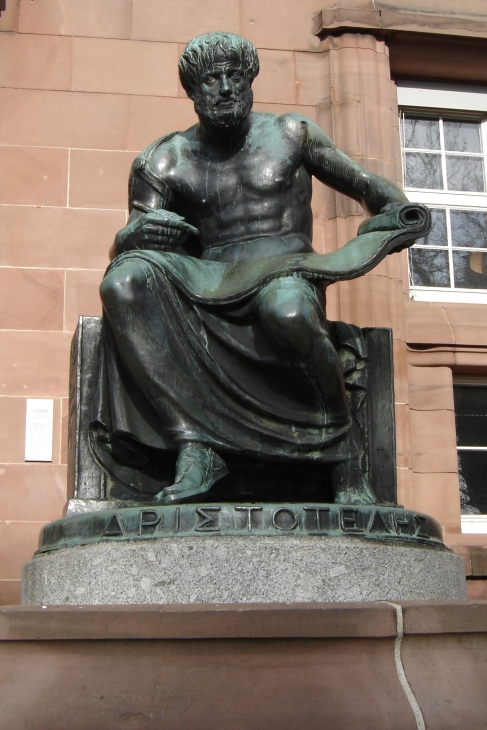Plato, Socrates, and Aristotle are some of the most important figures in Western philosophy. These three figures all lived around 400 BC and influenced pretty much all of Western philosophers that followed. After Plato passed away after Socrates, Aristotle was left in the world filled with wonders. What followed from then on was a work of true art.
Aristotle, the Greek ancient philosopher, had great interest in physics, poetry, theatre, music, ethics, and biology. Despite being born in the year 384 BC, he had very current interests.
In our course of Philosophy 12, we have studied the field of syllogism. Surprisingly, the roots of syllogism trace back to Aristotle. Aristotle has had many interesting ideas like syllogism in his years of life. Here are some examples of Aristotle’s greatest works: Golden mean, Aristotelian logic, syllogism, hexis, hylomorphism, and Aristotle’s theory of soul.
One of the greatest ideologies that Aristotle has contributed is to metaphysics. Metaphysics is, to Plato, “the theologic science”. Aristotle categorises metaphysics into three parts: substance, potentiality, and actuality.
Generally, these three parts are: Change in quanitity, change in space, and change in quality. Now, take note that this is the foundation of chemistry and physics, and other forms of science. This was around 350 BC. There are too many interesting facts about Aristotle to discuss about for this blog, so I’ll leave the intro at that, but if you want to find out more about Aristotle, you should do some research! 
Hi Tyler,
I recall that last year, Derek appreciated the logic at the heart of Aristotle’s ideas, and perhaps his roots at the heart of both physics and chemistry, as well. How do you see the elements of “substance, potentiality, and actuality” showing up in your own science classes (assuming you’re spending some time this semester with Ms. Moore, Mr. Yip or Mr. Bryce)?
Something else Derek mentioned in his Aristotle post from last year is the idea of different forms of substance:
“These forms include the Substantial, and Accidental. Essentially, Aristotle states the Substantial Form is one that consists of only the essential essence of that substance. For example the substantial form of a table is that it (depending on the person) four legs and a flat top. With substantial form, it is assuming that everyone will have an operational definition of the essences of a table. Obviously, the idea of a true substantial form not limited by the state of theory, is virtually impossible because one thing never has the same meaning for two people. On the other hand, Accidental Form. is defined by Aristotle as the NON-essential qualities of a substance. manipulating the essential qualities would change the substance into something else. Removing the legs of a table would render it into a wooden mat or something of the like. However, a tables accidental form would still be considered a table but may have different designs, perhaps an extra central leg, again what we consider a table and how we draw that line is still shrouded in mystery. In theory, however, Hylomorphic Accidental Form makes sense.”
How do you think these forms influence our understanding (or interpretation) of the world around us? Or do they?
Hoping your #PhilsDayOut is leading to some more thought on these and other questions. Enjoy your weekend,
Mr. J
Posted by bryanjack | October 11, 2013, 10:25 pmWhy is it surprising that the roots of the syllogism can be traced back to Aristotle?
Posted by littlealmond | October 14, 2013, 1:48 am